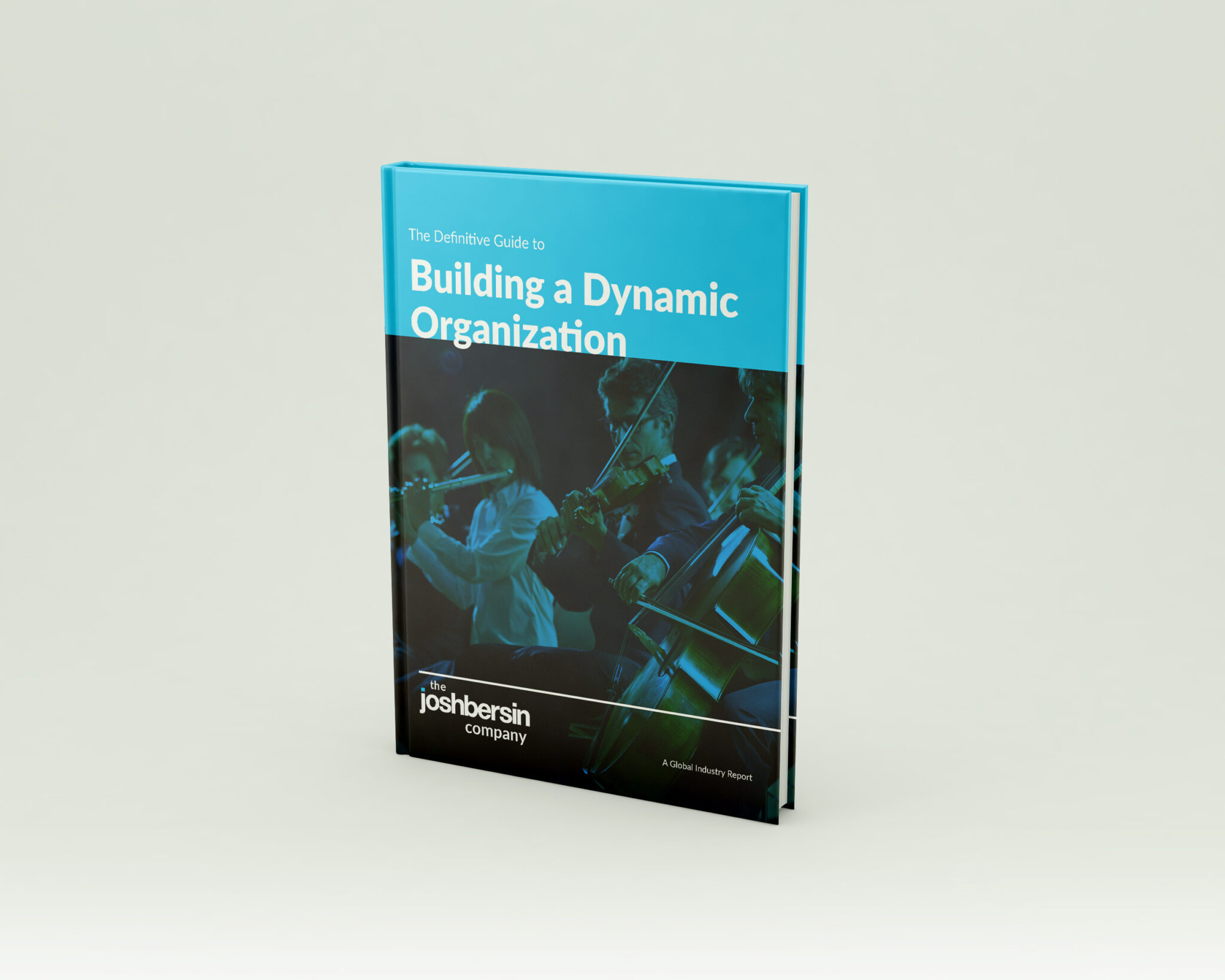How to become a Dynamic Organization with Josh Bersin and Kathi Enderes

Explore key findings from the Dynamic Organization research
Dynamic Organizations like HSBC, Mastercard, and Novartis reap an array of game-changing benefits, including a greater likelihood of exceeding financial targets, more innovation, and enhanced productivity. Yet only 7% of companies have the systems in place to achieve these kinds of results. Download our executive summary of The Dynamic Organization report to learn what it takes to embrace this winning workforce strategy.
‣ Top takeaways
“Dynamic Organizations look for completely different outcomes than static organizations. Static organizations think about cost efficiency and execution orientation, but CEOs want to have more of an impact on transformation, not execution excellence. They need to innovate at the frontlines and put innovation at the center of what an organization does, not innovating on the edges and executing flawlessly because the world is no longer stable.”
“The word agile has been thrown around for about 10 years and unfortunately it’s taken on a life of its own. What this research is showing you is that it’s more than agile. Agile is a set of methodologies, usually for product design and solutions that can create a dynamic organization but this is bigger than that. This is really an organizational level strategy to allow the organization to adapt without waiting for management to tell people what to do.”
“[Becoming more dynamic] is not just an HR project. This isn’t just something that HR pushes. Every company that we’ve talked with says this is sponsored by the business and that it’s something the business wanted. They needed to solve a business problem or they needed more skills and more transformation and that’s why it’s successful. If it’s just another HR thing it won’t be successful but if leaders embrace it and say ‘This is something we have to do’ then it will.”
“In order to become dynamic you have to be willing to move people around and respect that they might have the skills but they might be young or maybe they haven’t worked in the domain before. If you don’t have a skills meritocracy you end up with these silos and that’s a very traditional way of thinking that you’ll find in a lot of companies.”




